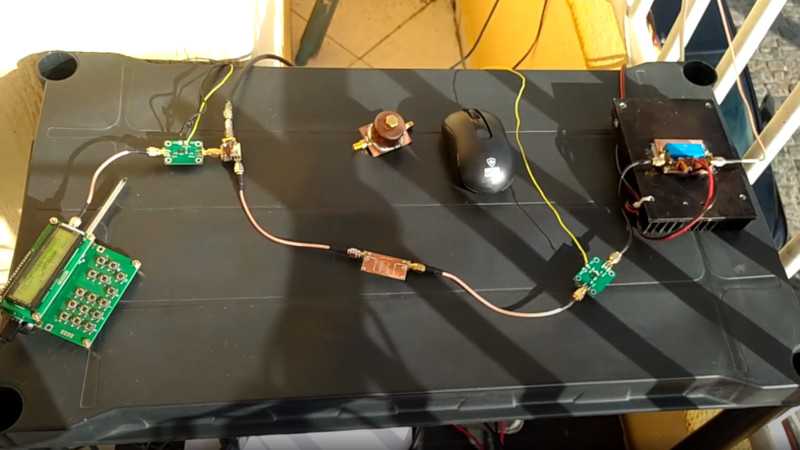A Satellite Upconverter Need Not Be Impossible To Make

Those readers whose interests don’t lie in the world of amateur radio might have missed one of its firsts, for the last year or two amateurs have had their own geostationary satellite transponder. Called Es’hail-2 / AMSAT Phase 4-A / Qatar-OSCAR 100, it lies in the geostationary orbit at 25.9° East and has a transponder with a 2.4 GHz uplink and a 10.489 GHz downlink. Receiving the downlink is possible with an LNB designed for satellite TV, but for many hams the uplink presents a problem. Along comes [PY1SAN] from Brazil with a practical and surprisingly simple solution using a mixture of odd the shelf modules and a few hand-soldered parts.
An upconverter follows a simple enough principle, the radio signal is created at a lower frequency (in this case by a 435 MHz transmitter) and mixed with a signal from a local oscillator. A filter then picks out the mixer product — the sum of the two — and amplifies it for transmission. [PY1SAN]’s upconverter takes the output from the transmitter and feeds it through an attenuator to a MiniCircuits mixer module which takes its local oscillator via an amplifier from a signal generator module. The mixer output goes through a PCB stripline filter through another amplifier module to a power amplifier brick, and thence via a co-ax feeder to a dish-mounted helical antenna.
The whole thing is a series of modules joined by short SMA cables, and could probably be largely sourced from a single AliExpress order without too much in the way of expenditure. It’s by no means easy to get on air via Es’hail-2, but at least now it need not be impossibly expensive. Even the antenna can be made without breaking the bank.
We covered Es’hail-2 when it first appeared. May it long provide radio amateurs with the chance to operate worldwide with homebrew microwave equipment!
from Blog – Hackaday https://ift.tt/3rMsFep
Comments
Post a Comment